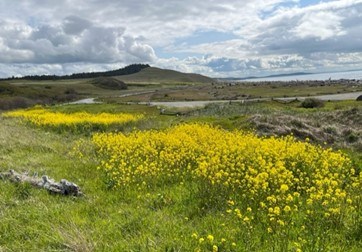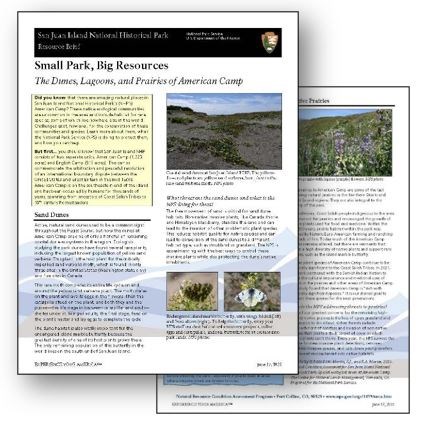Last updated: September 16, 2024
Article
Small Park, Big Resources: The Dunes, Lagoons, and Prairies of American Camp

NPS
The park commemorates the arbitration and peaceful settlement of an international boundary dispute between the United States and Great Britain in the mid-1880s. American Camp, one of the two park units, consists of about 1,220 acres of land composed of unique and varied ecosystems, including remnant native prairie, coastal sand dunes, and coastal lagoons.
Although these native ecosystems are small in size, they are vitally important and large enough to support the endangered island marble butterfly, the imperiled sand verbena moth, and a number of unique plants and wildlife. The plants in American Camp include common camas, chocolate lily, biscuit root, and American dune grass.
To most effectively protect these unique habitats and the species living there, National Park Service (NPS) mangers need to know how the habitats are doing. A recent study, funded by the NPS Natural Resource Condition Assessment Program, focused on the condition of the sand dunes, lagoons, prairies and other habitats in American Camp. The study’s findings will aid in park planning and management decisions, especially regarding vegetation stewardship and endangered species recovery.
To most effectively protect these unique habitats and the species living there, National Park Service (NPS) mangers need to know how the habitats are doing. A recent study, funded by the NPS Natural Resource Condition Assessment Program, focused on the condition of the sand dunes, lagoons, prairies and other habitats in American Camp. The study’s findings will aid in park planning and management decisions, especially regarding vegetation stewardship and endangered species recovery.

